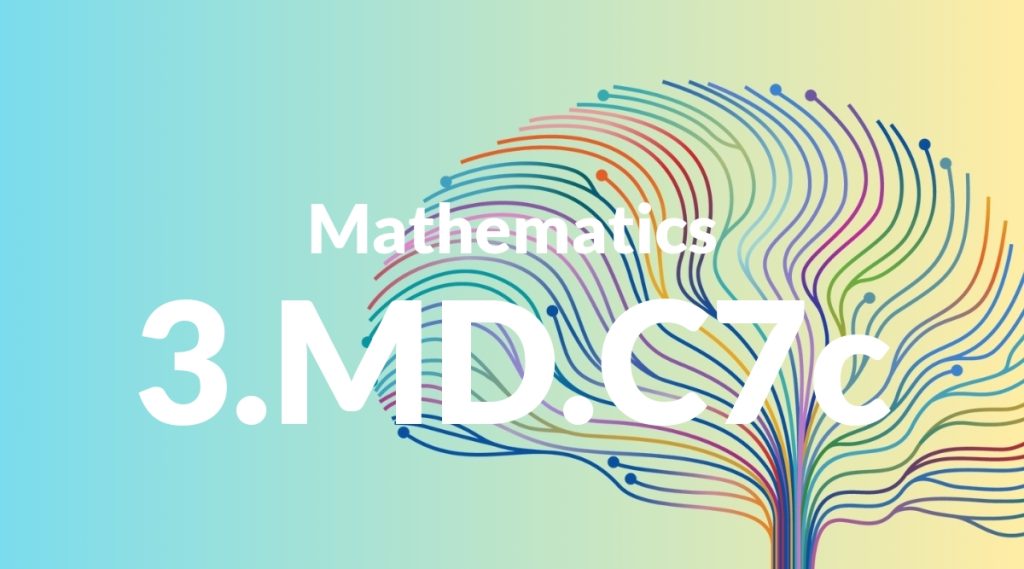Standard: 3.MD.C7c – Use tiling to show in a concrete case that the area of a rectangle with whole-number side lengths a and b + c is the sum of a × b and a × c. Use area models to represent the distributive property in mathematical reasoning.
Grade level: Grade 3
Subject: Mathematics
Domain: Measurement & Data
Teacher Overview
This standard helps students understand the relationship between multiplication and area, specifically through the use of the distributive property. It lays a foundation for algebraic reasoning and problem-solving skills. Students should be familiar with basic multiplication facts and the concept of area before tackling this standard.
Mastering this standard prepares students for more advanced topics in geometry and algebra, including complex area calculations and algebraic expressions.
Common Misconception 1
Some students might believe that the area of a combined rectangle is found by adding the side lengths, which is incorrect because it ignores the multiplication required to calculate area.
Intervention 1
Utilize visual aids such as tiles or graph paper to show how the distributive property works in calculating the area of combined rectangles.
Common Misconception 2
Another common misconception is confusing the distributive property with simple addition of areas, not recognizing the multiplication involved.
Intervention 2
Provide concrete examples and area models to clarify the difference between adding areas and applying the distributive property.
Prerequisite Knowledge
Students should understand basic multiplication and the concept of area as the number of square units that cover a surface.
Subsequent Knowledge
Students will develop an understanding of more complex area calculations and the ability to apply the distributive property in algebraic expressions.
Instructional Activities
- Use graph paper to create tiled rectangles and calculate their areas.
- Create area models using colored tiles to visualize the distributive property.
- Solve real-world problems involving the area of combined rectangles.




